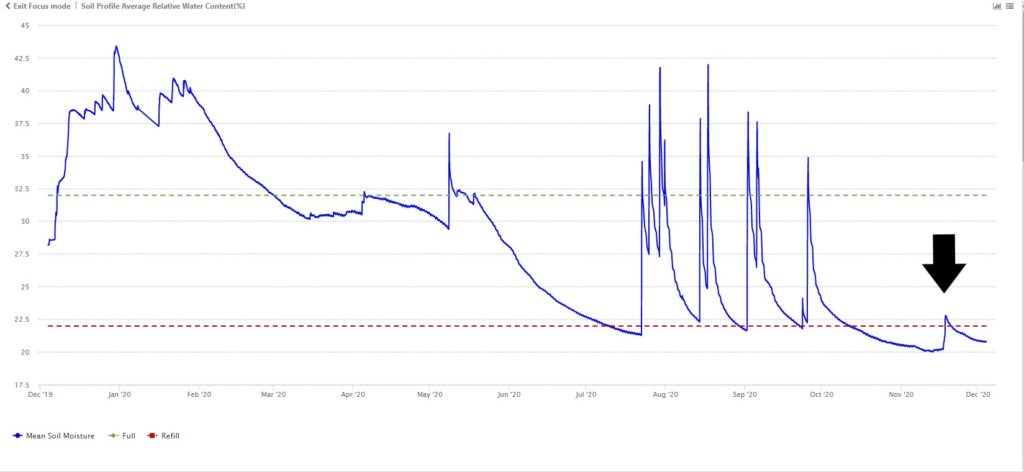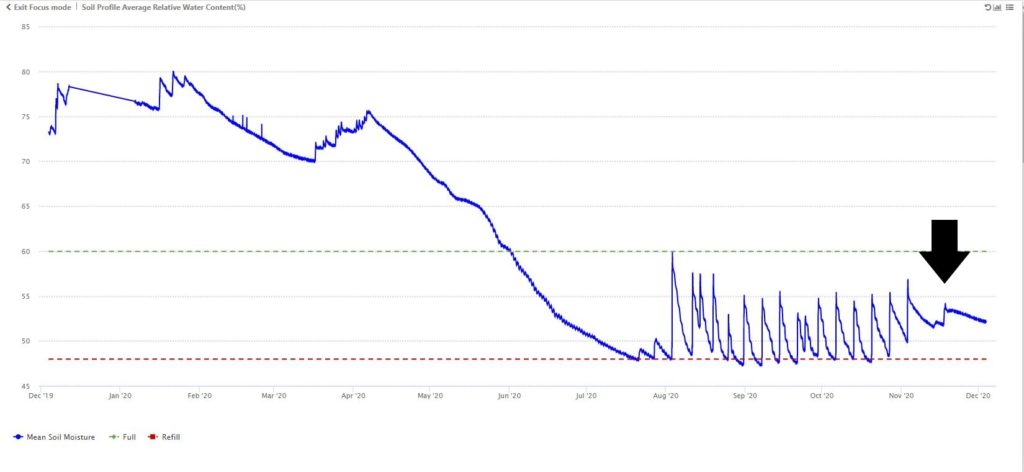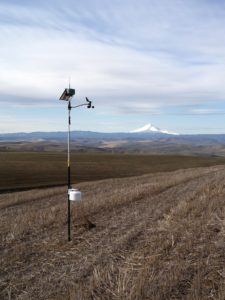Should you be irrigating this winter?
With a potential drought on the horizon, vines will need water sooner than you think.
As though 2020 couldn’t get any more biblical, it looks like we could be headed for another drought. So far this year, total rainfall is below average with respect to the previous five years. To be fair, 2019 was also pretty dry at this time. This year however, La Niña is hanging out over the Pacific, so it looks like we may be rainless for a while.
I recognize that most of us are either celebrating this year’s harvest or, in the case of we Northern Californians, licking our wounds over a smoke-tainted vintage. Either way, the vines have been all tucked-in for the winter and we don’t have to worry about them until Spring, right? I wish it were so. Trust me, if there’s anyone who wants to curl up in front of the fire with a brandy and forget about this year, it’s me. However, you might want to consider irrigating this winter and here’s why.
What we've been seeing
Here at AV, we’re all about soil moisture, so we happen to have a wide array of vineyards to peek at in the off-season. We almost always recommend continuing to irrigate post-harvest until leaf-fall or the first big rain. In a Napa Valley vineyard shown below, the first big rain on November 13 only delivered around 1.2 inches and we haven’t seen another rain for almost a month. As you can see, this barely made a dent in the soil moisture profile. Average soil moisture is nowhere near where it was this time last year, and even last year is what we would consider droughty.

Here’s another site in the Russian River AVA that received 2.2 inches during the November 13 rain event. You can see that here as well, that moisture dissipated quickly and left the soil profile in a position similar to where it was at the end of June.

Why does this matter?
Your grapevines may be fully dormant, but their lignified structures are still in equilibrium with the soil. If the soil is dry, the trunks, cordons, and canes are dry. This can affect a vines’ ability to accumulate cold hardiness and survive freezing winter temperatures. Dehydration is the leading cause of cold injury, as osmotic stress builds and causes the cell-membrane to rupture.[1]
While you may live in a place where winter injury isn’t a problem, starting the new season with an empty tank can cause problems early in the growing season by way of uneven budbreak and shoot elongation and development. We definitely saw that problem last year and kicked ourselves for not over-emphasizing to more growers the need to irrigate pre-budbreak. Water is a key driver in cell expansion and growth, so you want to make sure your vines aren’t suffering prematurely. Stressing a vine too early can lead to slow vegetative growth and reduced fruit set and shatter if you’re not careful.
I don’t want to panic anyone into running out and flooding your vineyard. Too much water is just as bad and could make it hard for you to reach a desirable stress level during lag phase and veraison. Don’t jump the gun at the expense of your phenolics but do get them off to a moist start if rainfall doesn’t do that for you.
[1] Keller, M., 2015. The Science of Grapevines. Academic Press. Page 330.

If you're not measuring, you're guessing

Look, we’re scientists. We like to know exactly what we’re working with before we take action. The best way to do that is to invest in a capacitance probe. They’ll run you under a thousand bucks, and you can see what your soil moisture profile looks like. This way you can plan accordingly and know exactly when to irrigate for best quality.
You can hook these puppies up to various telemetry systems (We work primarily with Ranch Systems and Davis Instruments but are evaluating other systems) and get your frost alerts, air quality, and weather data all rolled into one easy-to-use dashboard. Like anything though, this is an investment, so make investing in quality a priority.
This isn’t meant to be a shameless plug, even though, I’ve got no beef with being shameless. It’s 2020 and I’ve been cutting my own hair since March. But we measure soil moisture because it’s the only way to really accurately tell what’s going on down there. Differences in soil texture and stratification can mean one block’s soil moisture is totally different from another. There’s no magic one-size-fits-all rule for irrigating. You have to measure it to do it right.

